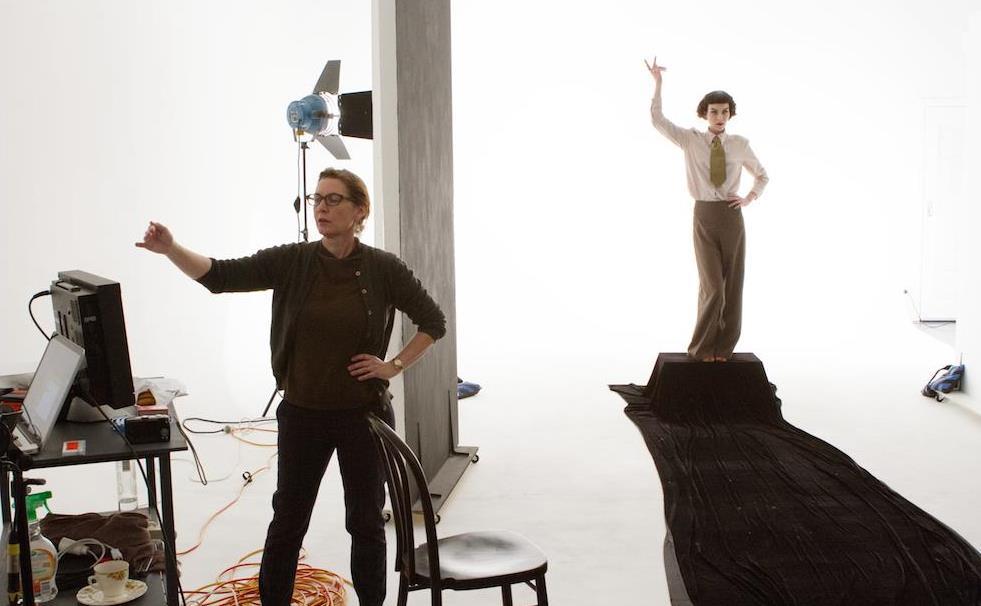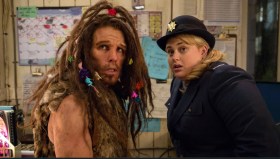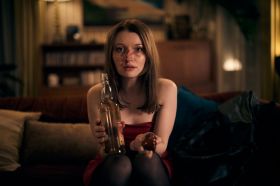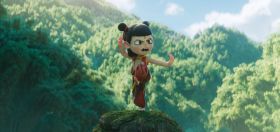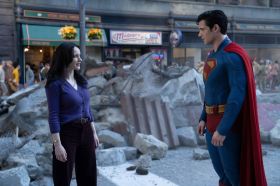Bohemian artist Rosaleen Norton scandalised 1950s Australia with her occult paintings and kinky sex life. The media painted her as an evil witch who destroyed the career of the famous conductor, Sir Eugene Goossens (who fled the country in shame). Norton even spent time in jail.
Perhaps you’ve never heard of her, but if filmmaker Sonia Bible has any say, that’s bound to change. Seven years in the making, Bible’s feature documentary The Witch of Kings Cross uncovers rare, never-before-seen private collections of Norton’s art, scrapbooks and diaries. These are combined these with interviews with those who knew her and her work, along with sensuous, impressionistic recreations. What emerges is a portrait of an extraordinary and rebellious woman with a fierce intellect. If you’re anything like me, the film might send you in search of Norton’s sexy and mysterious artworks. Bible hopes it will send our major galleries, who have ignored Norton, in search of the same.
Read more: Review: Recipe for Murder
Rochelle Siemienowicz: When did you first become aware of Rosaleen Norton, and when did you decide to make a film about her?
Sonia Bible: I discovered Rosaleen Norton’s story in 2010 when I was making my first film, Recipe For Murder, about women who poisoned their husbands with rat poison in Sydney in the 1950s. I was researching tabloid newspapers from the 1950s, and articles about Norton kept popping up.
After the success of Recipe For Murder, I was selected to be mentored by international filmmakers at Adelaide Festival as part of F4 for outstanding emerging documentary filmmakers. I tossed the Norton idea around and got an enthusiastic response. Mentor Natalie Almada said, ‘There are no rules in documentary, you can do whatever you want’. That was in late 2012, so it’s been a long journey to get to screen.
Can you walk us through the timeline from first idea through to premiere screenings?
In early 2013 I got some development funding, so was able to hire researcher Imogen Semmler, who I worked with on Recipe For Murder. We found interviewees who knew Norton personally and we did all the regular archive searches, but there was no official collection of Norton’s artworks anywhere. We knew that there were a couple of private collections held by very private people, but I didn’t uncover them until a couple of years later.
Some of the key interviewees were unwell or elderly, so I felt an urgency to start filming, and several of the people have since passed away. My husband, Edward Gill, was the cinematographer and he describes himself as ‘long suffering’! He was patient and tolerant when I got him out filming fig trees at night. A weekend away or walking the dog were all filming opportunities because I needed a lot of shots for some of the fast editing nature sequences.
Over seven years, I kept making the film in the belief that it would get financed at some point, but it never did. I just kept working, saving money and then doing a bit more. We shot the drama elements in September 2017 in a studio in Tempe. Uncovering and documenting two major private collections of rare never before seen paintings, diaries, scrapbooks and poetry profoundly affected the film, allowing Rosaleen to tell her own story. It was also the point of no return for me. I felt that if I didn’t finish the film, this material could be lost forever.
How did the financing of the film impact on the production?
Apart from a modest cultural grant from the City of Sydney Council, and a crowd-funding campaign that paid for some interstate travel to document an art collection, the film is self-funded. It was disappointing that the ABC were not interested, but making the film independently freed me up to do whatever I wanted. In 2014, filmmaker Peter Butt came on board as co-producer. We were both making history films outside the system, so we’d catch up for coffee and talk about ways of doing things without any money, or little money. It forces you to be more creative and think outside the square.
What was the most difficult/challenging aspect of getting the film made?
I think the hardest aspect of making the film was the archive footage. Paying government departments ridiculous amounts of money from my life’s savings to license old footage that was paid for by Australian taxpayers sixty years ago was galling, stressful and a considerable setback.
‘Paying government departments ridiculous amounts of money from my life’s savings to license old footage that was paid for by Australian taxpayers sixty years ago was galling, stressful and a considerable setback.’
This is your third documentary focusing on historical women who defied societal expectations or conventions. What is it about such women that fascinates you?
I think it’s really important to tell true stories about real women who were brave, complex and sometimes bad. It’s happening in fictional drama and audiences love them. There’s an expectation that if you make a historical documentary about a woman, that she has to be either fighting for the women’s movement, or some kind of saint, worthy of a pedestal… well certainly in Australian broadcast TV.
There’s one thing that the women protagonists in Recipe For Murder, Muriel Matters andThe Witch of Kings Cross have in common. They have all have been to jail.
What do you hope the audience takes away from The Witch of Kings Cross?
I hope that the audience will see Rosaleen Norton as one of the most significant Australian women artists of the mid-twentieth century. It’s irrelevant whether you like her work or not. Her talent is undeniable and the way she was treated and overlooked by our cultural institutions was, and still is, appalling. I’d like to see The Art Gallery of NSW purchase one of her major works.
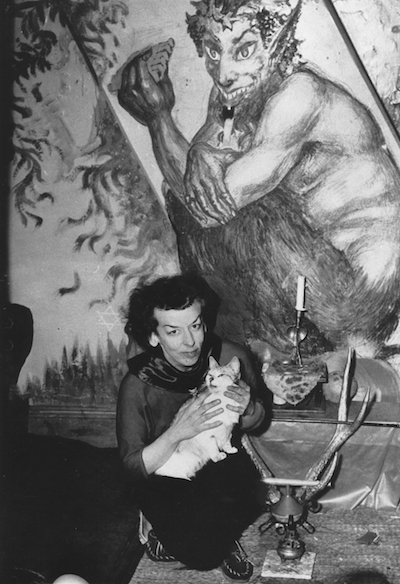
What was your path to becoming a filmmaker? What training or artistic paths led you to this point and why do you do it?
I have a musical background and studied Electronics Engineering in the Northern Territory. I started in the film industry as a sound editor and music editor. I directed my first short film while working as a sound editor because I wanted to create an experimental soundtrack. And that was it, from then on, I wanted to be a director.
Then I worked as a promos producer and did post-graduate studies in screenwriting at UTS. I was working as Head of Production in a film trailer house when I left to develop a feature film script that became Recipe For Murder.
I’m a self-confessed post-production queen because I like the mix of technology geekiness and creative use of pictures and sound to tell a story.
Your film makes a lot of creative use of stylized drama/recreation and animation. Did you have any other documentary models or inspirations that helped you plan these sequences?
I have always been a fan of Errol Morris, from The Thin Blue Line, to Tabloid, and Wormwood. There’s some great editing, and non-literal use of images. I really like the animation and scrapbooks in Kurt Cobain: Montage of Heck so that was a reference for The Witch of Kings Cross animated scrapbook pages. The films of David Lynch are a regular place I return to for inspiration. He has a way of taking you into a mysterious otherworldly realm.
The Witch of Kings Cross recently won an editing award at the European Cinematographers Awards. What can you tell us about that process and the editor you worked with? Was it challenging to find the story through-line?
The main editor was me. Yes, I know, it’s a lot of hats… but who else is going to work for six months or more for free? I am a short form editor and the longest film I’d edited before was 10 minutes. I edited the film on an iMac in the lounge room of a one-bedroom apartment, with a dog on my lap. After filming most of the interviews, I edited them into a rough shape and then transcribed that into a screenplay. Whenever I got stuck with the editing, I would return to screenplay and story maps.
The film has a non-linear structure, and at one point in the editing, I got really confused, so I rearranged all the scenes back to a linear story and exported a 95-minute rough cut. I showed that to a few trusted people for feedback. I knew I wanted to take out 20 minutes and restructure it back to the non-linear story, but I had hit the wall and couldn’t face it anymore. So, I hired senior editor Fiona Strain for two weeks to help me get it to fine cut. That was the best decision and an invaluable process. Not only did we have a lot of laughs, Fiona injected a fresh perspective and I got to just be the director for a short while.
There was still a lot of work do with graphics design, digital compositing and animation. I collaborated with several designers, who all brought an extra layer of artistry to the film.
What’s next for you as a filmmaker?
I’ve still got a bit of work ahead to deliver The Witch of Kings Cross internationally by the end of the year. I’d love to be hired as a director and just do that one role on something. I’m looking forward to developing new ideas, and not necessarily just in documentary. It might be time to go fully scripted!

Image: Sonia Bible, supplied.
Pet peeves or things you wish you could change about the industry?
Of all the history documentaries funded by public broadcasters or Screen Australia and the previous funding bodies, less than ten percent are about women. It’s a national disgrace that has been overlooked by the gender equity committees because they bundle ‘documentary’ into one category. To quote Gloria Steinem, ‘Women have always been an equal part of the past, we just haven’t been part of history.’
Key mentors or teachers who’ve been instrumental in helping you find your voice and make your work?
Filmmaker and co-producer, Peter Butt has been a friend and mentor since I contacted him after he made the brilliant Who Killed Dr Bogle and Mrs. Chandler? Director Gillian Armstrong has been a mentor after I worked with her on several trailer campaigns for her films. Director and Producer Susan Lambert is a mentor and was instrumental in getting my first film, Recipe For Murder made. ‘The Story Department’ screenwriting teacher Karel Segers has been a constant mentor over many years, as I always return to storytelling fundamentals.
Three top tips for documentary filmmakers wanting to work with historical subjects?
- Learn to edit – you need to be able to manage archive and deal with lots of different types of media
- Slow down, be organized and make lists, especially with archive
- Get the funding before you go too far – I’ll be taking this advice in future.
You’re based in Sydney. How has Covid-19 affected you and your work?
I honestly don’t think I would have a completed film now if it wasn’t for Covid-19. My paid work all came to a grinding halt in late March, when I lost 100% of my work, so I had time. I got JobKeeper, so I had a regular income and a break from the hustle. I got a couple of NSW Govt Covid-19 Small Business Grants that I used to pay the colour grader, sound mixer, masters, and launch the film into the international marketplace. It was the best arts funding I’ve ever had.
What’s next for The Witch of Kings Cross in terms of exhibition or broadcast?
The World Premiere was in Paris at L’Etrange Festival in September. The French love the film, so we hope to get some TV sales in France. The UK Premiere is on Friday the 30th of October in an online Festival. The Australian Premiere is in Sydney on November 4th at Events Cinema, George Street as a special presentation by Monster Fest. Tickets sold out in 48 hours. The encore screening in Sydney is at Opera Quays at the Sydney Women’s International Film Festival, November 27-28.
We have just signed with Journeyman Pictures in the UK for worldwide sales and distribution. Journeyman will definitely be releasing worldwide as VOD on iTunes with more platforms and broadcasters to be announced. In Australia, we are planning screenings in small cinemas, as well as community, gallery and educational screenings. Screening details are available on our website. Announcements will be made on the Facebook page.
This interview was assisted by Dame Changer, an Australian professional women’s collective, providing opportunities in training and networking for women in the screen industry, and The Power of Visibility.
